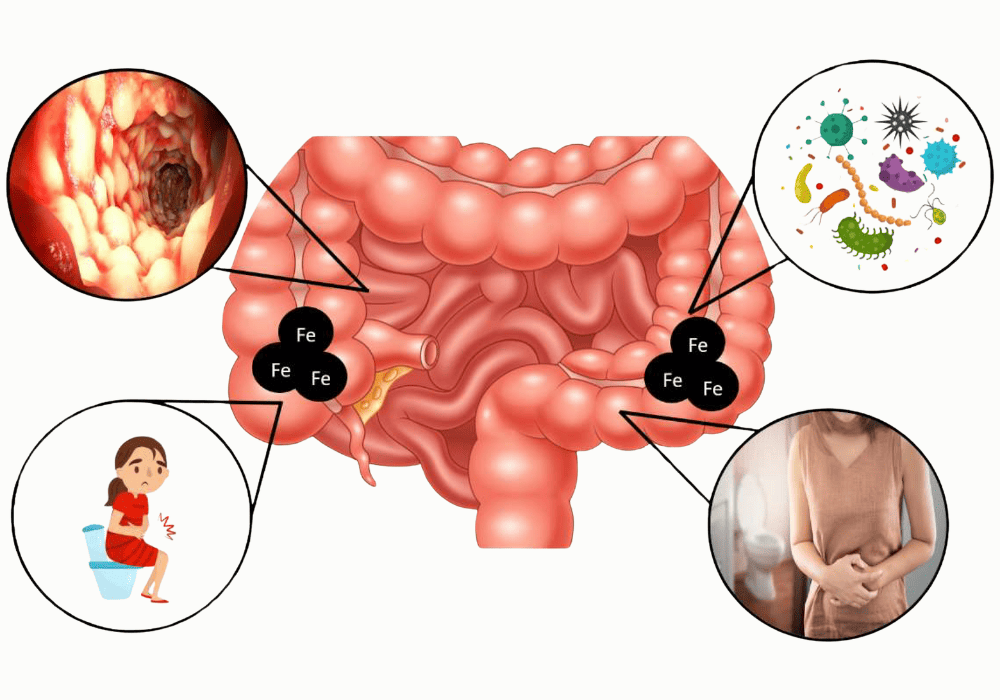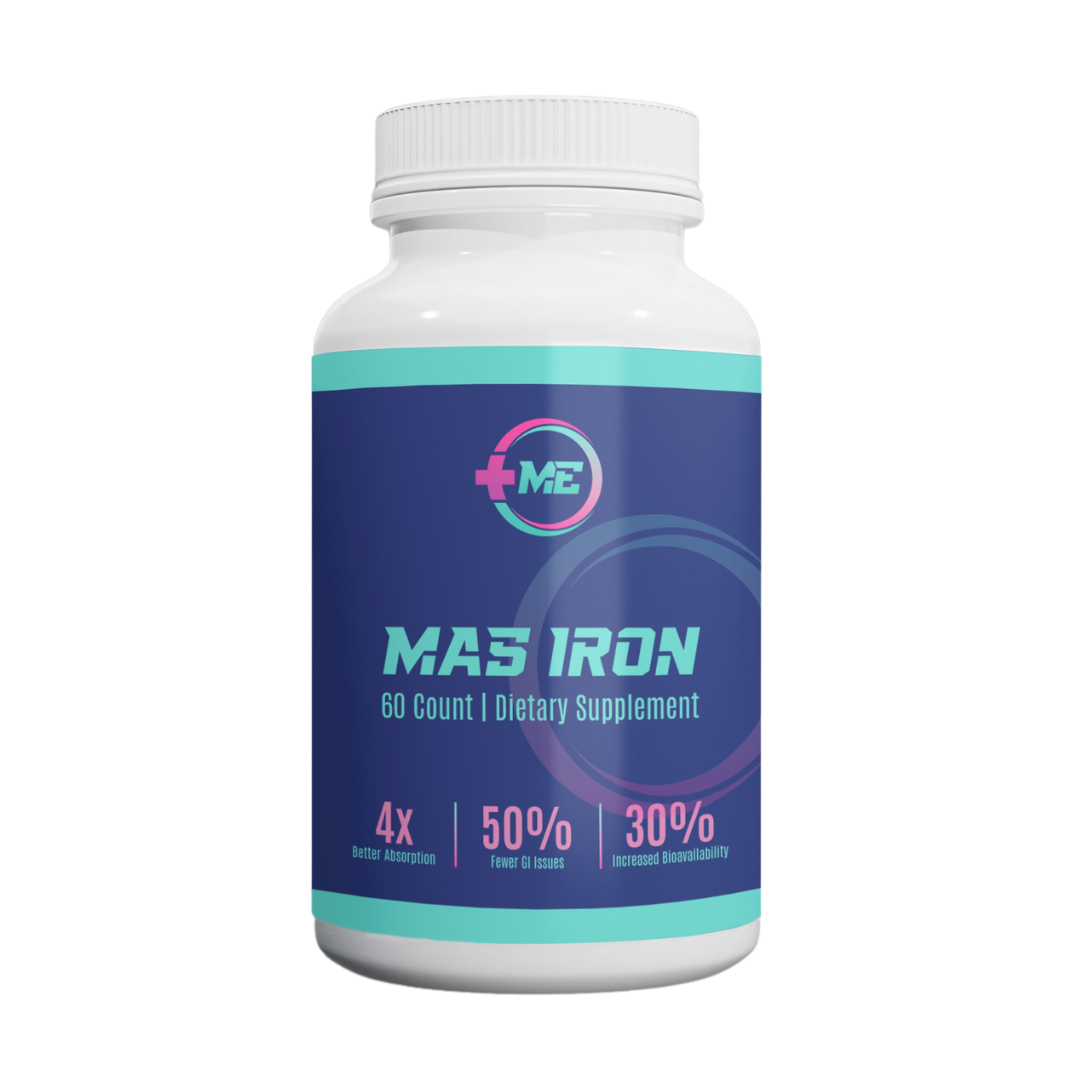You noticed you have a lot of the common symptoms of iron deficiency, so you begin supplementing like you’ve been told you’re supposed to.
But, you’re three weeks into your new supplement when the familiar pre-run ritual begins.
First, the urgent bathroom scan during your warm-up walk.
Then that queasy, cramping feeling that makes you debate whether today’s tempo run is worth the risk.
By mile two, you’re desperately eyeing every porta potty and wondering if you packed enough toilet paper.
Sound familiar?
If you’re like most runners I know, you’ve probably experienced this exact scenario.
You started taking iron supplements to boost your energy and performance, but instead you’re dealing with constipation that lasts for days, followed by urgent bathroom trips that derail your training schedule.
You’re definitely not alone in dealing with this issue.
Research shows that up to 60% of athletes abandon their iron supplements within the first month due to gastrointestinal side effects.
So, in this article, we’re going to dig deep into…
- The science of why most iron supplements are so hard on your stomach
- Show you the fool-proof way to fix almost all these digestive issues
- And how to further increase the iron you’re absorbing from your supplement for faster results.
The Science Behind Why Most Iron Supplements Give You Stomach Issues
Most traditional iron supplements you’ll find on amazon or in Walmart and Walgreens use a form of iron called ferrous sulfate.
Ferrous sulfate is so common because it is a cheaper form of iron. It’s less expensive because the sulfate form (salt) is a simpler formulation and the manufacturing process is more efficient.
But, the cost of a cheaper sulfate comes at the cost of absorbability.
When you digest ferrous sulfated, your stomach acid breaks down the iron salt, releasing free iron ions that your digestive system struggles to process.
Studies have shown that your body can only absorb about 10-15% of iron from ferrous sulfate, with the remaining 85-90% staying in your digestive tract [2].
This leftover iron creates an osmotic effect that pulls water away from your lower intestines, leading to the constipation that can last for days.
Ferrous Sulfate and Gut Irritation
The problem with traditional iron forms goes deeper than just poor absorption. The unabsorbed iron feeds harmful bacteria in your gut while irritating your intestinal lining
Research reveals that ferrous sulfate triggers a significant inflammatory response in your digestive tract, with studies showing increased markers of gut irritation within hours of taking standard iron supplements [3].
This creates the perfect storm: you’re constipated for days, then when things finally move, it’s urgent and unpredictable, which is exactly what no runner wants during training.
Ferrous Sulfate Blocks Iron from Your Diet
The final issue with traditional iron supplements that use ferrous sulfate is that these cheap iron salts spike a hormone called hepcidin.
Hepcidin is primarily produced by the liver and acts as the master regulator of the body’s iron balance. It controls iron absorption from the diet, recycling of iron from stored cells, and iron release from storage.
When hepcidin spikes, it can actually block further iron absorption for up to 24 hours.
Thus, your supplement is essentially fighting against your body’s natural protective mechanisms (in addition to giving you stomach issues).
Iron Bisglycinate: The Proven Fix
Luckily, there is one chelated iron form that research shows can break this destructive cycle: iron bisglycinate.
Unlike traditional iron salts that break apart in stomach acid, chelated iron stays bound to amino acids that protect it through digestion.
Basically what happens is the glycine molecules act like bodyguards, escorting the iron safely through your stomach acid and delivering it directly to your small intestine where absorption actually occurs.
This bypasses the stomach irritation that causes nausea and the large intestine disruption that causes constipation.
Studies have shown iron bisglycinate produces 50% fewer gastrointestinal side effects compared to ferrous sulfate, while maintaining superior absorption rates.
With Bisglycinate, Less is More
Here’s what’s interesting about chelated iron—the superior bioavailability means you need less total iron to achieve the same results.
Research from multiple clinical trials demonstrates that runners can achieve the same iron status improvements with lower doses of bisglycinate, reducing the total burden on their digestive system.
While ferrous sulfate supplements typically contain 65mg of elemental iron per dose, research shows that just 25-30mg of iron bisglycinate provides equivalent therapeutic benefits [6].
This isn’t just about convenience—it’s about training consistency.
When you can take a more bioavailable form at a lower dose, you eliminate the digestive disruption that forces missed workouts and unpredictable bathroom emergencies.
The practical takeaway is significant for runners.
Less unabsorbed iron in your gut means no osmotic effect pulling water from your intestines. No excess iron feeding harmful bacteria. No inflammatory response that leaves you feeling worse than before you started supplementation.
How to Further Improve Absorption of Iron
While switching to a supplement at uses bisglycinate over sulfate will make a big difference, there’s even more you can do and it’s why some iron supplements will work better than others.
Cutting-edge research shows that certain vitamins and minerals can increase iron uptake by up to 300% when combined in the right ratios [10].
Unfortunately, most iron supplements ignore this synergistic research entirely. So, let’s look at what what some of these ingredients are…
Vitamin C
Vitamin C is the most well-known absorption enhancer, converting iron from its less absorbable ferric form to the more bioavailable ferrous form at the absorption site.
Research shows that just 100mg of vitamin C can triple iron absorption from plant-based sources, and significantly enhance absorption even from chelated forms [11].
But here’s where most supplements get it wrong. They either skip vitamin C entirely, include inadequate amounts, or use forms that degrade quickly in storage.
The research is clear: you need buffered vitamin C that remains stable and active when combined with iron.
Folate and B12
Even more importantly, iron supplementation without adequate B vitamins is like building half a bridge.
Your body needs folate and B12 to actually utilize the iron you absorb for red blood cell production and oxygen transport.
Studies show that up to 30% of people with iron deficiency also have concurrent B vitamin deficiencies [12].
Folate plays a critical role in DNA synthesis for new red blood cell formation, while B12 is essential for red blood cell maturation.
Research demonstrates that athletes with combined iron and B vitamin deficiencies see dramatically faster performance improvements when all nutrients are addressed simultaneously rather than sequentially [13].
The practical takeaway is significant for runners dealing with fatigue and performance decline.
If you’re only addressing iron without supporting B vitamins, you’re leaving performance gains on the table even as your iron levels improve.
Alpha GPC
Alpha-GPC is a choline-containing phospholipid. When ingested, alpha-GPC is rapidly absorbed and easily crosses the blood-brain barrier.
It is most well-known as a nootropic for cognitive-enhancement purposes. However, research has also shown it can enhance the absorption of iron.
- One study demonstrated that taking Alpha GPC with a traditional iron supplement quintupled the absorption of iron.
- In another study, Alpha GPC was shown to increase iron absorption from foods.
So, Is Cheaper Really Better?
Unfortunately, many runners focus on the upfront cost per bottle rather than the cost per absorbed milligram.
Here’s the math that actually matters: if ferrous sulfate costs $10 for a month’s supply but you only absorb 15% of it, you’re paying $67 per absorbed gram of iron.
A higher-quality chelated iron might cost $35 per month, but with 80% absorption, you’re paying just $31 per absorbed gram – less than half the real cost.
Factor in the training days you don’t lose to digestive issues, and the value calculation becomes even clearer.
Research supports this economic reality, with studies showing that participants using chelated forms required shorter supplementation periods to achieve target ferritin levels [7].
When you can reach your iron goals in 8-10 weeks instead of 16-20 weeks, the total investment actually decreases.
Plus, if you’re reading this because you stopped taking your iron supplement or don’t take it consistently because of the stomach issues, then the cost of the cheaper supplement is actually your health and performance.
Research demonstrates that athletes who use chelated iron are 89% more likely to stay consistent and use beyond 3 months compared to just 31% with traditional iron salts [9].
Better compliance means better results and more consistent training.
That's Why We Created MAS Iron
MAS Iron uses genuine iron bisglycinate with the supporting nutrients that research shows optimize absorption and utilization.
Our formula combines iron bisglycinate with buffered vitamin C, active folate, AlphaGPC and Bioperine B12 in precise ratios shown to maximize iron uptake.
It’s the only iron supplement specifically formulated for endurance athletes that addresses both absorption optimization and red blood cell formation support.
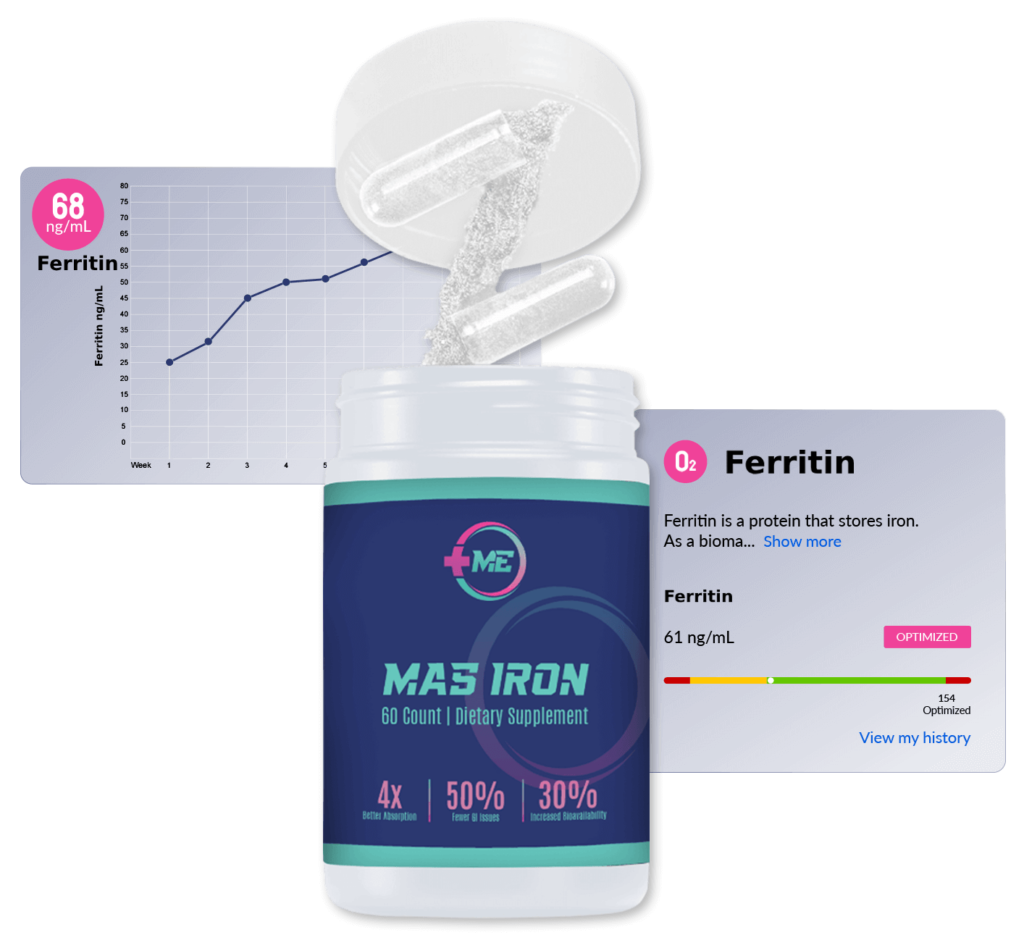
So Why Is MAS IRON Better?
MAS Iron combines the most efficiently absorbed form elemental iron with clinically proven ingredients to aid in absorption.
Each ingredient tested alone with iron demonstrated the ability to enhance absorption by 30% to 400%. This is why MAS Iron performs like no other iron product on the market.
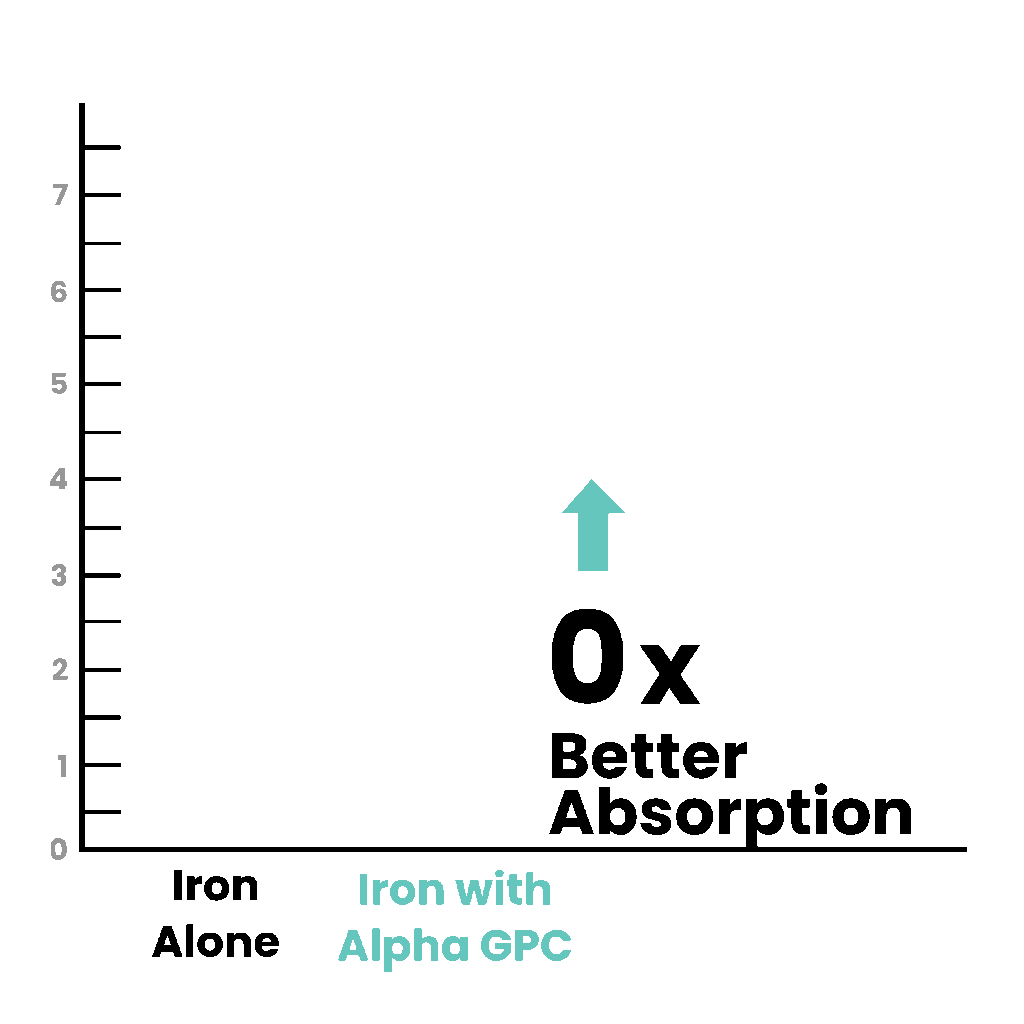
4x Better Absorption
The addition of Alpha GPC when taking an iron supplement has been shown to increase absorption up to four times compared with taking iron alone.
Alpha GPC has also been shown to increase the absorption of nonheme iron from food sources.
30% Increase in Bioavailability
Clinical research on BioPerine has made it clear that black pepper increases the uptake of iron supplements as much as 30%.
Researchers believe this is because BioPerine enhances the bioavailability of iron supplements.
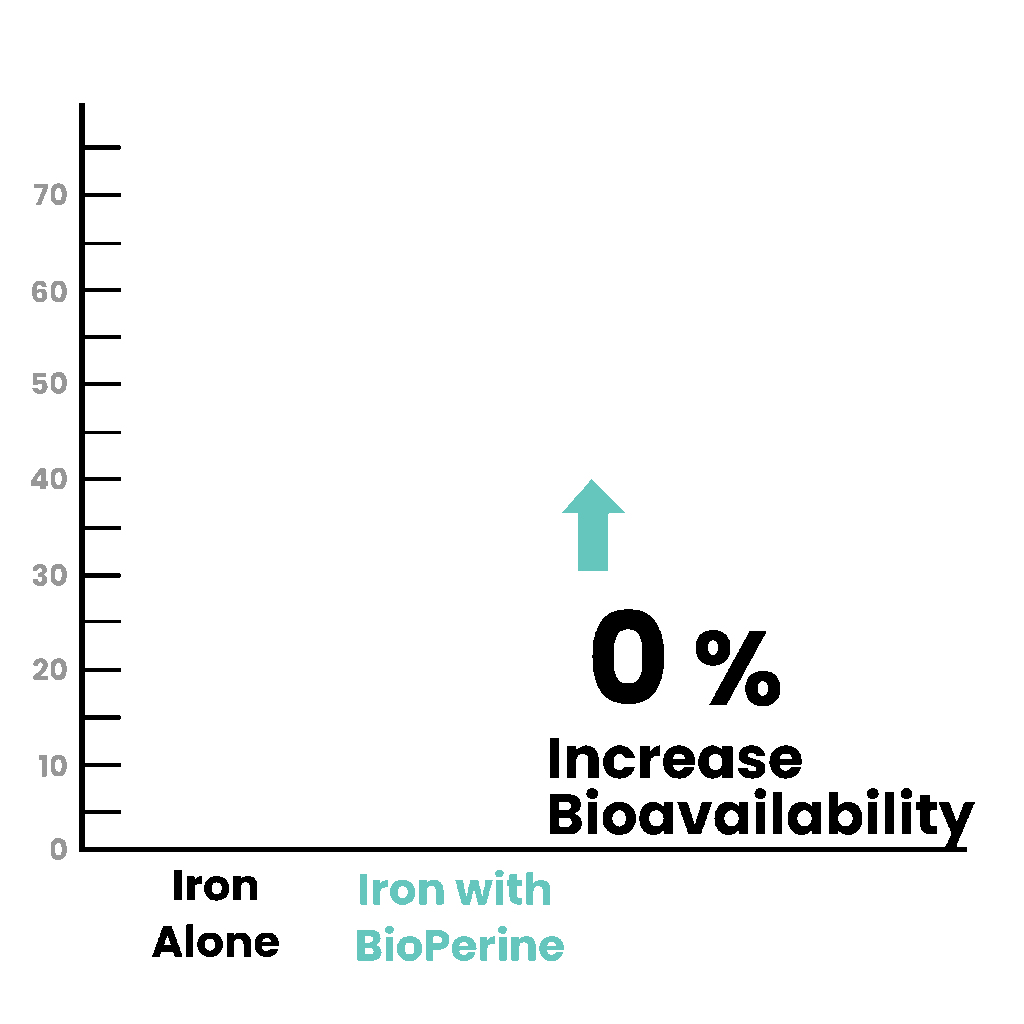
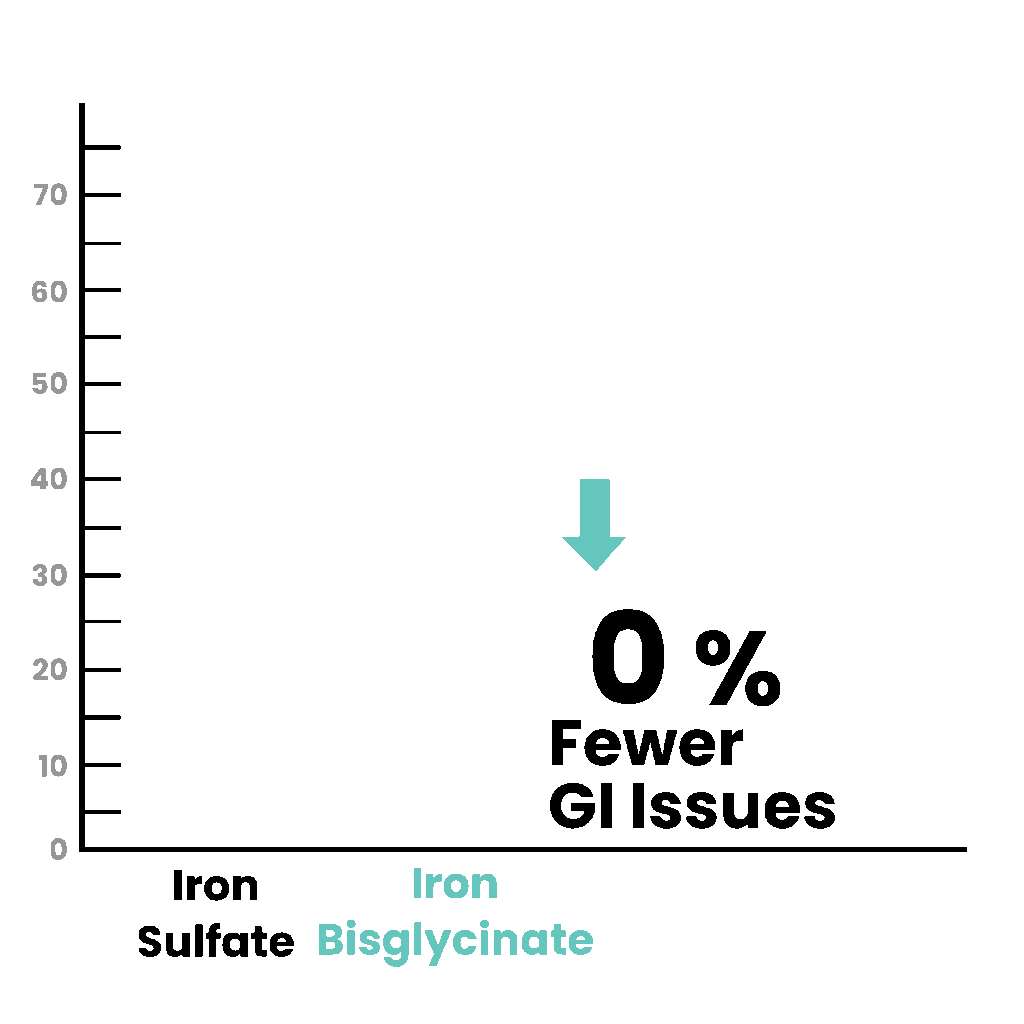
50% Fewer GI Side Effects
Not only is iron bisglycinate better absorbed than all other forms of iron, but research has shown using iron bisglycinate resulted in 50-percent fewer GI side effects compared to the same dose of iron sulfate.
The Lab Work & Athletes Like You Speak for The Results
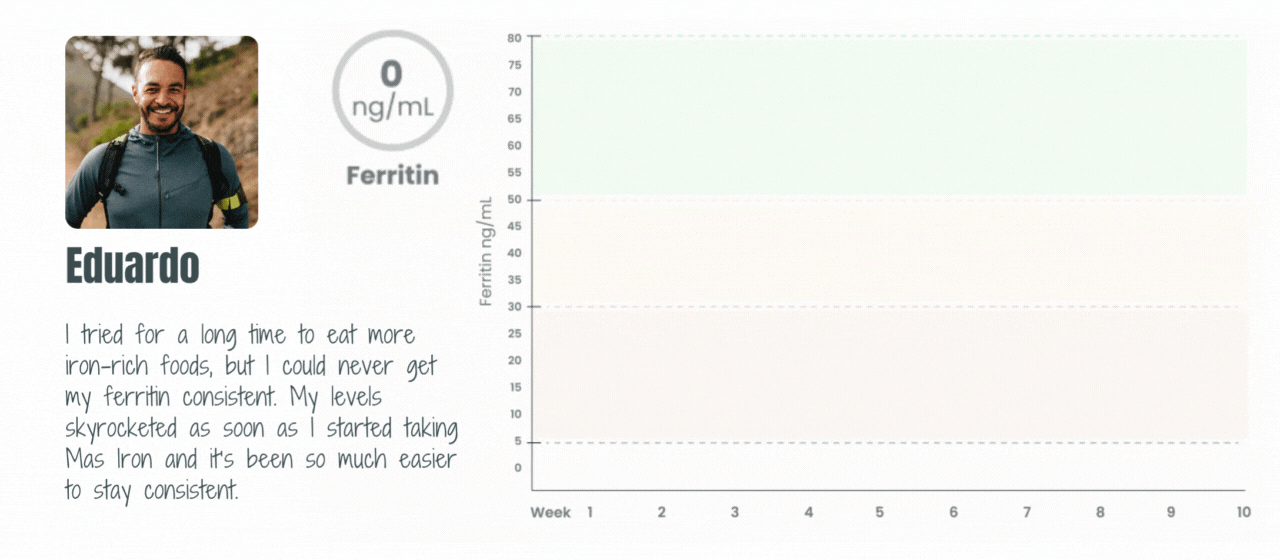
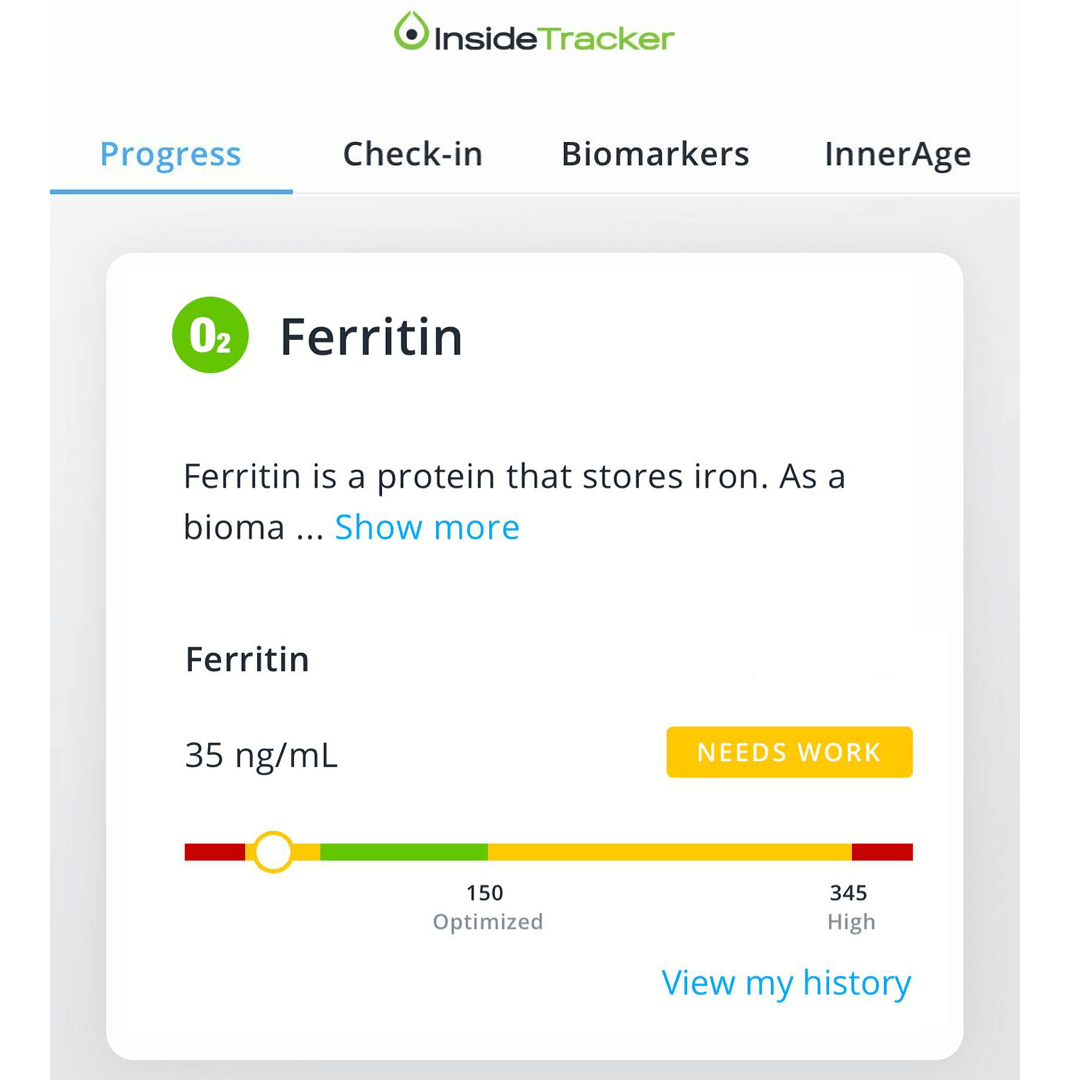
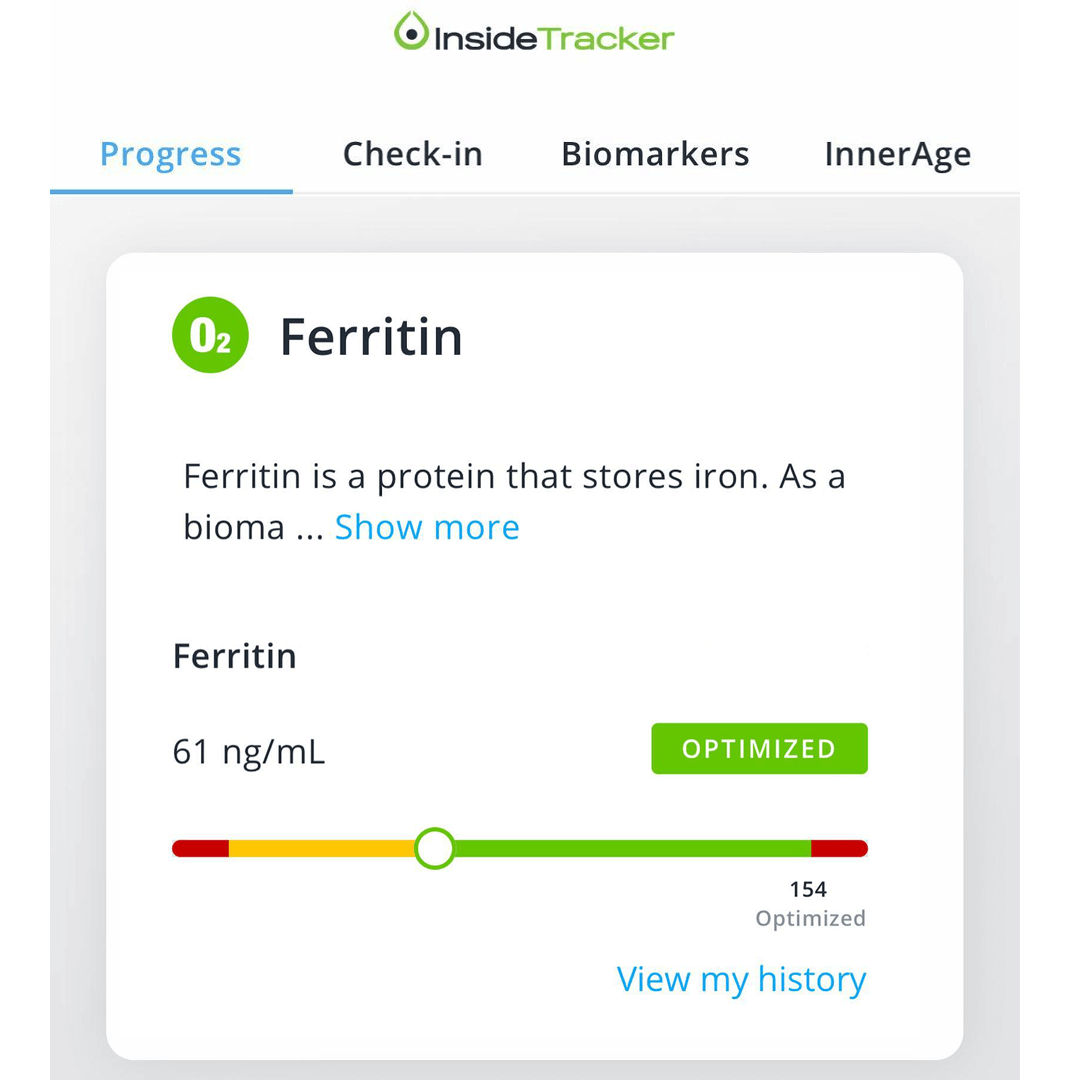

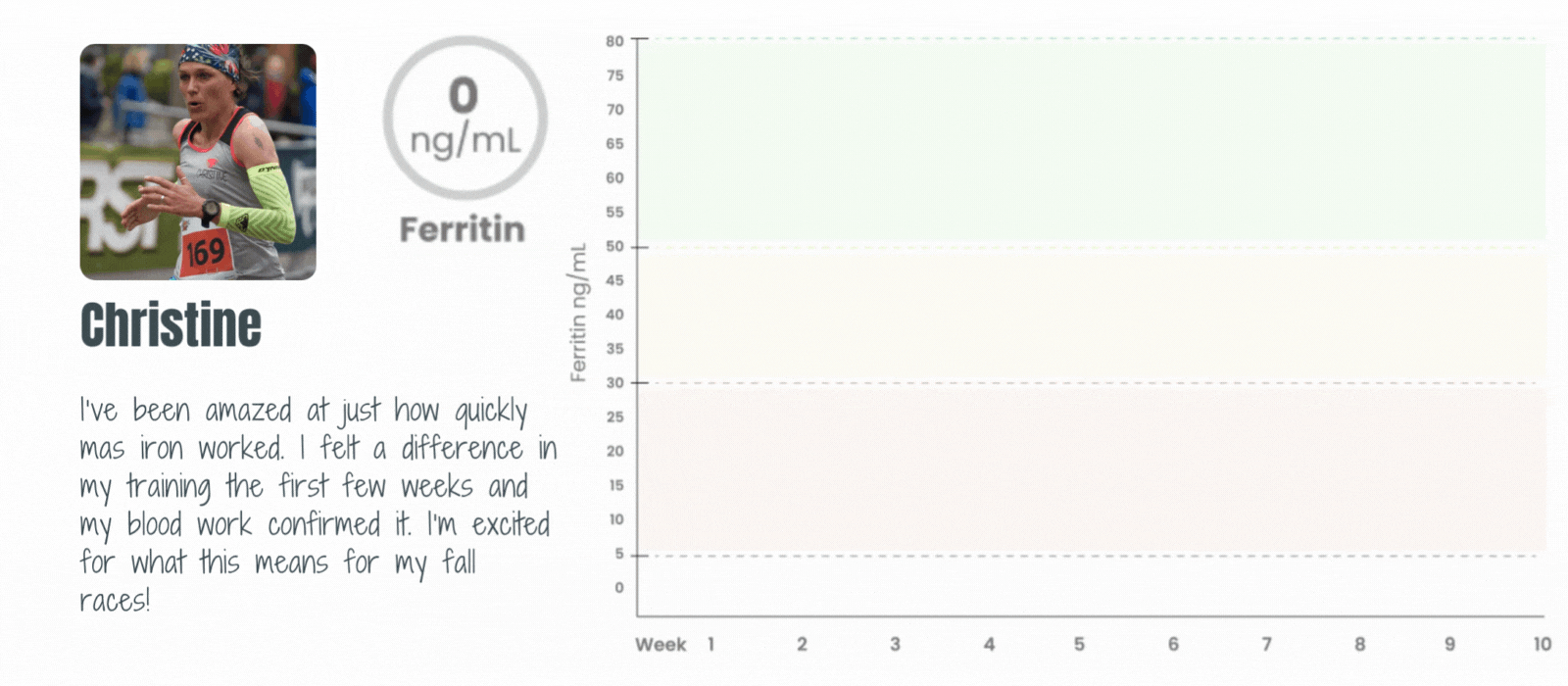
Backed By Our No Return Necessary Money-Back Guarantee
Try MAS Iron and if you don’t see your iron levels increase after 60 days or you’re unhappy for any reason, just let us know via email or phone and we’ll refund your money.
If you’ve been suffering from low iron this is a game-changer that will finally help you get your iron levels where they need to be!
The Bottom Line for Your Training
If you’re currently struggling with iron supplement side effects, don’t abandon iron supplementation altogether.
Your iron deficiency isn’t going to resolve itself, and the performance impact will only worsen over time.
Instead, make the switch to a research-backed chelated form that won’t derail your training schedule.

